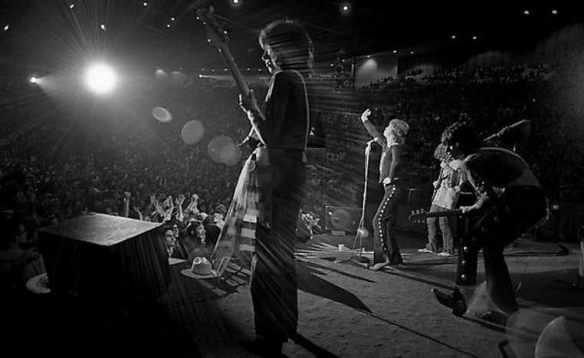This chapter begins by describing the two main classes of cells in the brain: neurons, which are the cells that allow us to think, and glial cells, which provide structural and functional support to the neurons. The physical signal, which allows us to think and act, are electrical signals carried by neurons (Fig. 1). These neurons are connected to one another via filamentous extensions from their cell bodies, called dendrites and axons, and they have a vast variety of branching patterns. Some just have a single filament extending from the cell body, others branch thousands of times forming complex structures. Neurons account for about 20% of the cells that make up the human brain, the other 80% is made up of glial cells. Glial cells in the brain come in two major types, oligodendrocytes and astrocytes. Oligodendrocytes are cells with extensions that wrap around segments of up to 30 surrounding neurons. They function to allow neurons to transfer their electrical signals faster. The function of astrocytes is less well known. It is thought that they provide nutrition and maintenance for neurons.
 Fig. 1 Electrical Signal From the Neuron of a Giant Squid
Fig. 1 Electrical Signal From the Neuron of a Giant Squid
Groups of neurons, connected to each via their dendrites and axons into circuits, are responsible for specific behaviors. An example of such a circuit is the knee-jerk reflex where stretching of the quadriceps tendon, accomplished by tapping below the knee using a reflex hammer, activates an electrical signal within sensory neurons in the quadriceps muscle, which then tells motor neurons connecting back to the quadriceps, to contract it. This leads to your leg kicking forward. There is an additional detail in this circuit – the same sensory neuron which signals the quadriceps motor neuron also deactivates the motor neuron connecting to the hamstring. This causes the hamstring to relax, which releases the leg, allowing it to kick forward as the quadriceps contracts.
The rest of the chapter gives a overview on how neurons receive and transmit signals. Later chapters will talk about this in greater detail.
The final idea in the chapter is that learning and memory is achieved in the brain through the structural and functional modification of connection points (called synapses) between neurons. Our individuality as human beings comes from differences between how these synapses are molded and shaped by our experiences. I think this is an amazing idea, hopefully in future chapters there more will be more specifics on this. What kind of shaping leads to a more patient person? Or a person who gets angry easily? What do the connections that represent a tree or a basketball look like in our memory?
Advertisements Share this:




